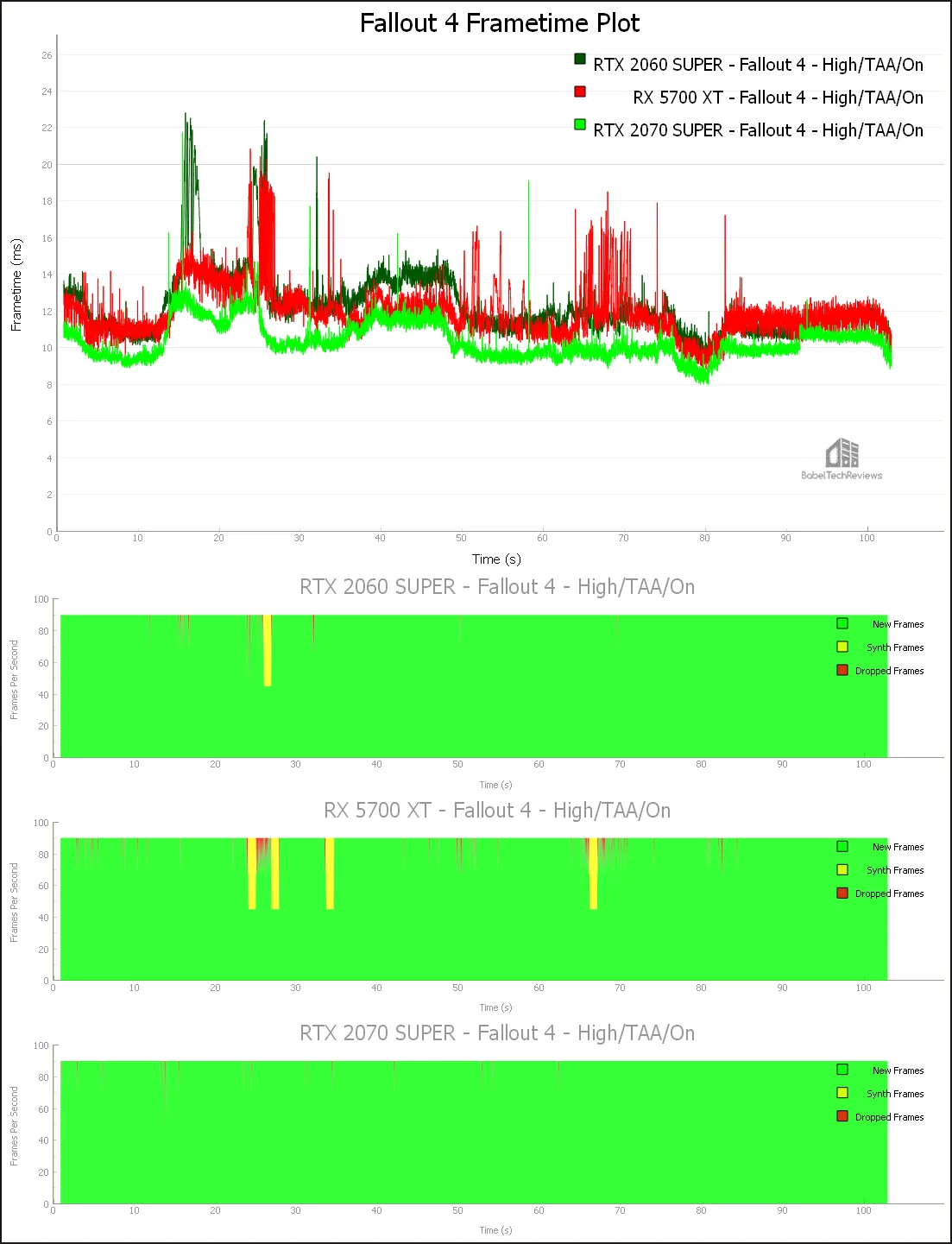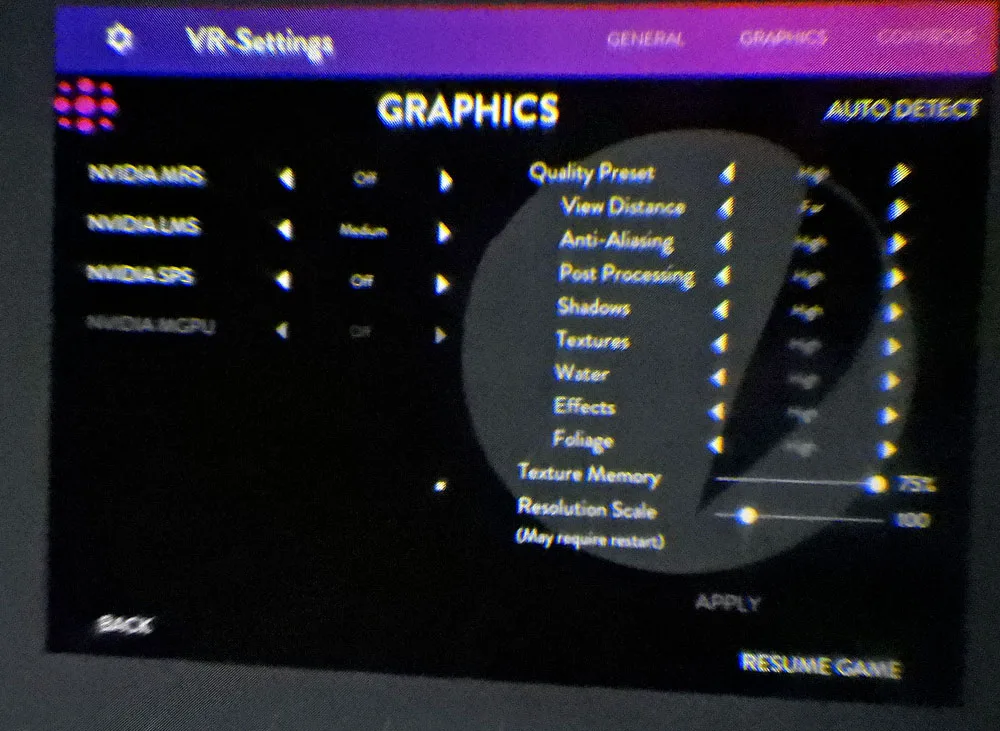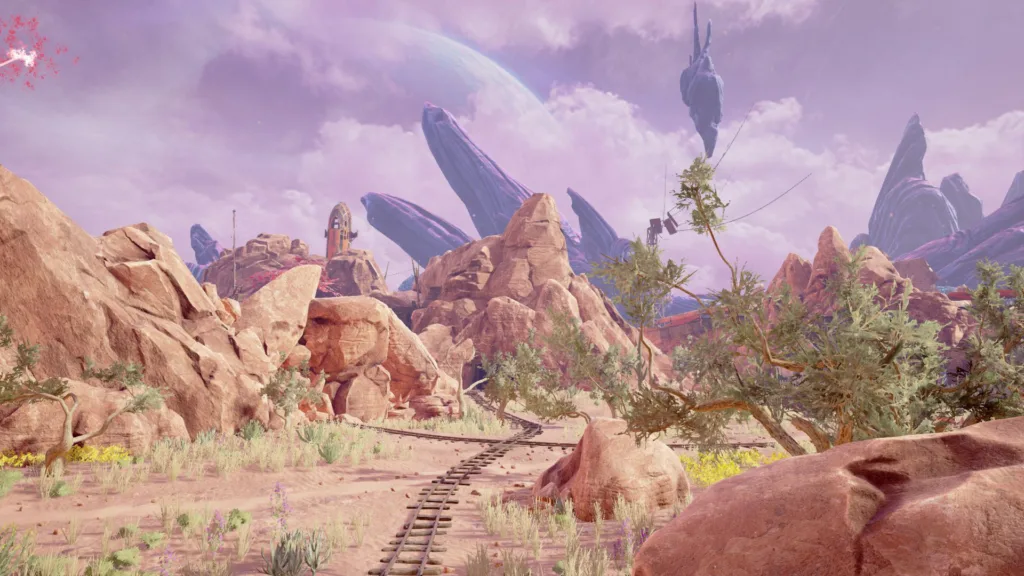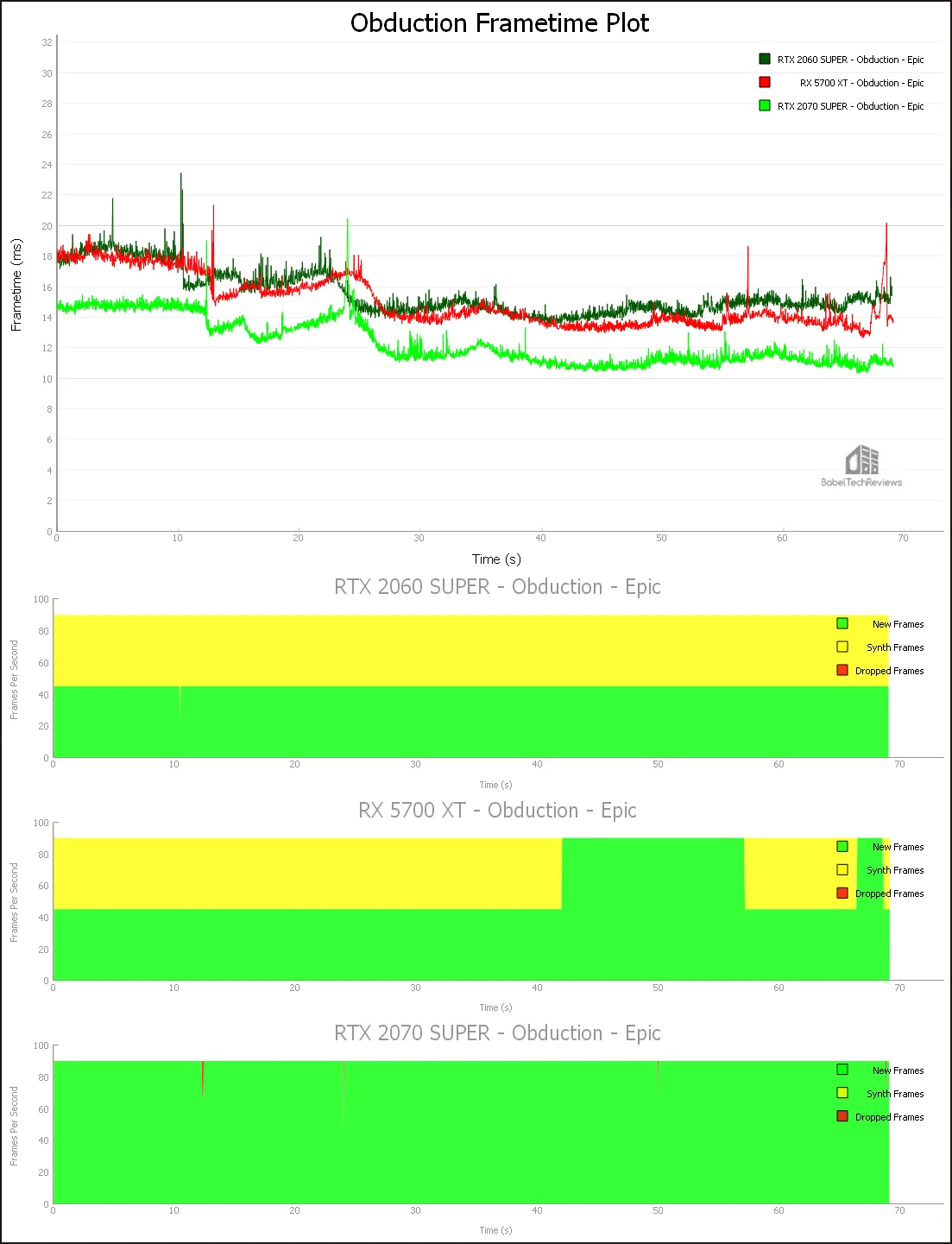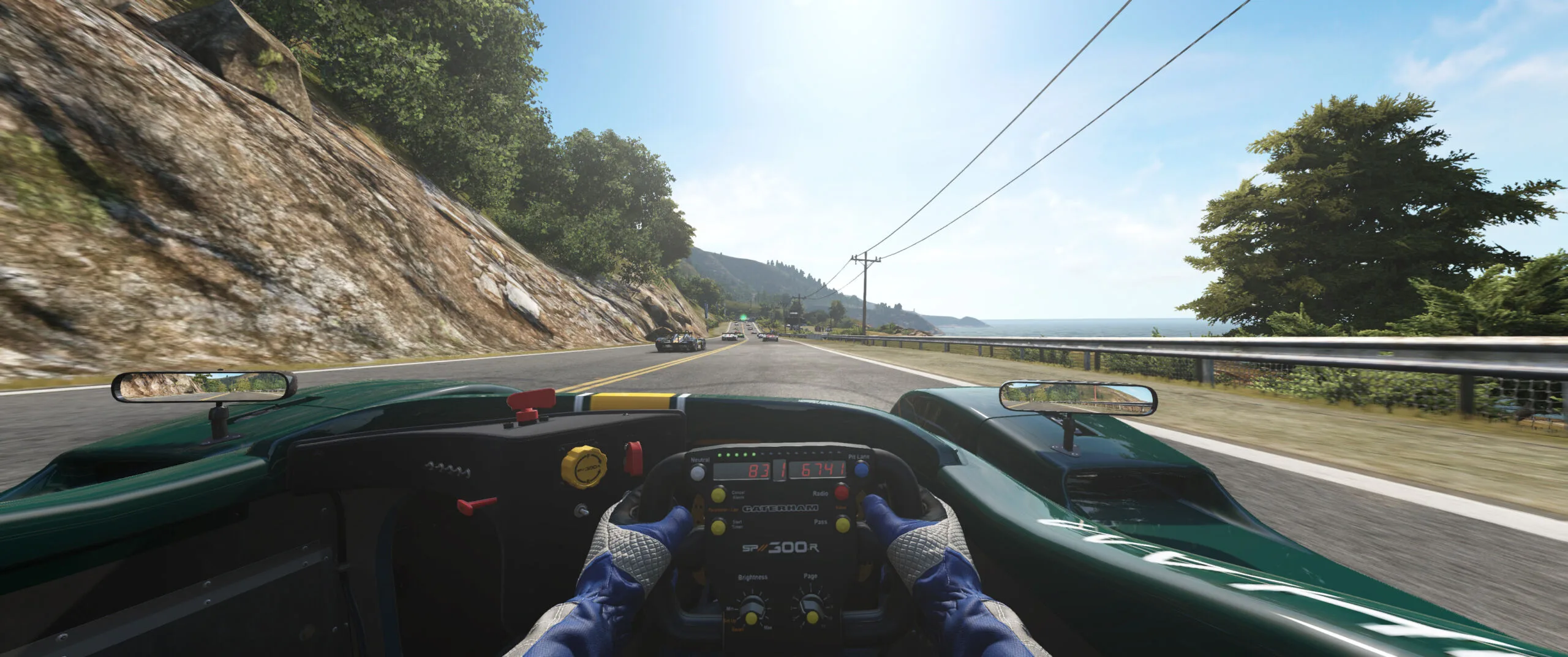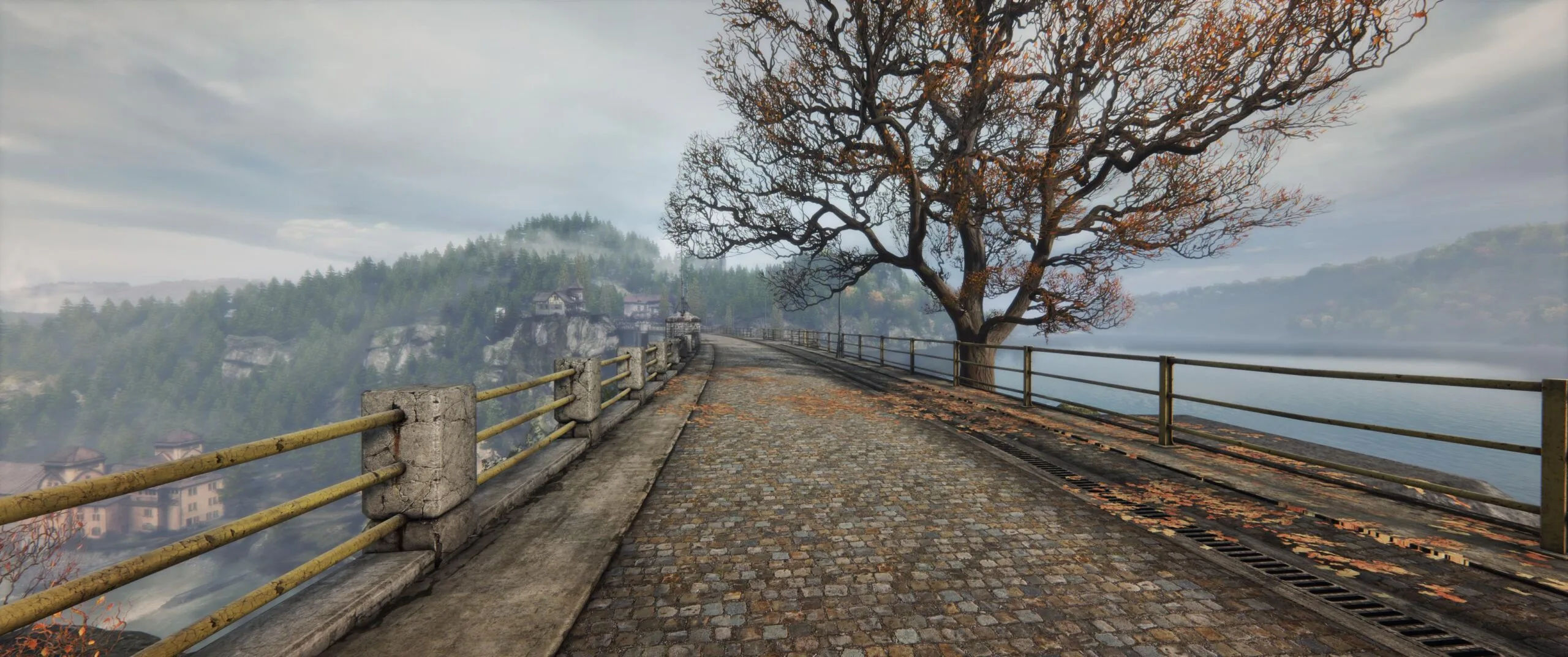VR Wars: The RTX 2060 SUPER Founders Edition vs. the 50th Anniversary Edition of the RX 5700 XT vs. the RTX 2070 SUPER Founders Edition
Continuing September’s “VR Month” at BTR, this review is a follow-up to last week’s VR evaluation where we saw the RX 5700 challenge the RTX 2060 in VR performance. We present a twelve-game VR performance showdown between the RX 5700 XT Anniversary Edition versus the RX 2060 SUPER and RTX 2070 SUPER Founders Editions measuring frametimes and unconstrained performance using FCAT VR.
Since we posted our original review over two and one-half years ago, we have benchmarked many VR games for our follow-up reviews over the past thirty months. We have also compared FCAT VR with our own video benchmarks using a camera to capture images directly from our HMDs’ lenses. For BTR’s VR testing methodology, please refer to this evaluation.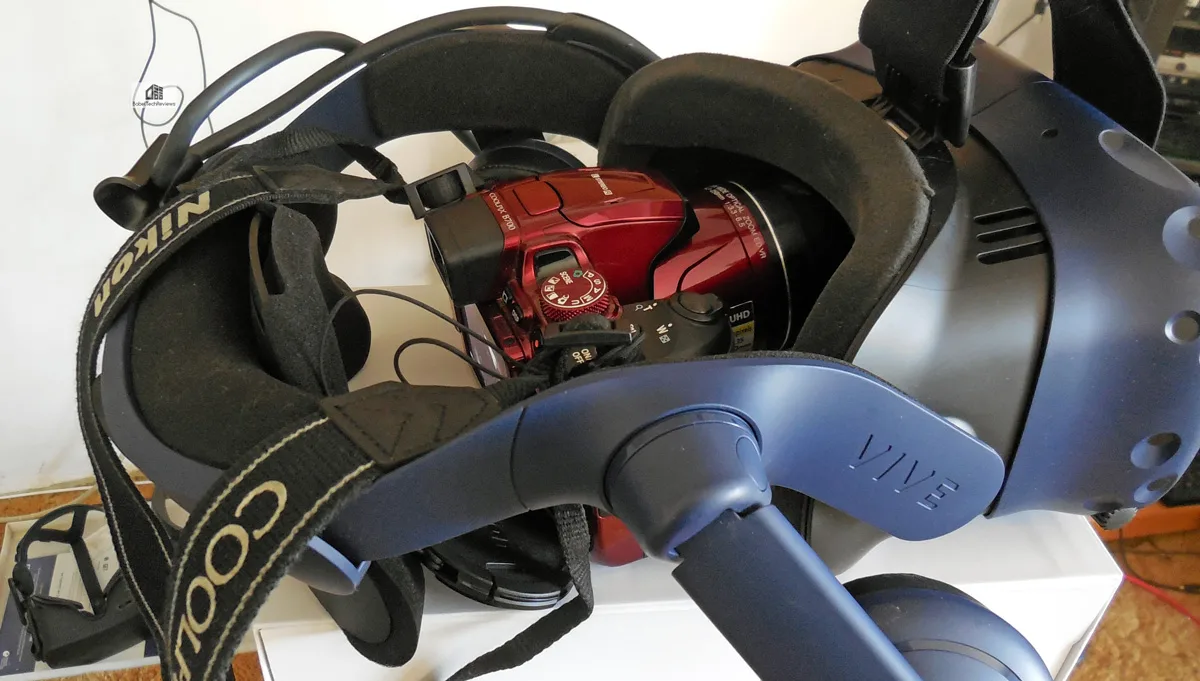
We currently benchmark twelve VR games at maxed-out settings using the Oculus Rift CV-1. BTR’s testing platform is an Intel Core i7-8700K at 4.8GHz, an EVGA Z370 FTW motherboard and 16 GB of T-Force XTREEM DDR4 at 3866MHz on Windows 10 64-bit Home Edition. Here are the twelve VR games that we benchmark including Subnautica that was just added:
- Batman VR
- Chronos
- DiRT: Rally
- Elite Dangerous
- Fallout 4
- Hellblade: Sennua’s Sacrifice
- Obduction
- Project CARS 2
- Robinson: The Journey
- Skyrim
- Subnautica
- The Vanishing of Ethan Carter
It is important to be aware of VR performance since poorly delivered frames can make a VR experience unpleasant even leading to VR sickness. It is also very important to understand how to accurately benchmark VR games as explained here. Before we benchmark our twelve VR games,check out our Test Configuration.
Test Configuration – Hardware
- Intel Core i7-8700K (HyperThreading and Turbo boost is on to 4.8GHz for all cores; Coffee Lake DX11 CPU graphics).
- EVGA Z370 FTW motherboard (Intel Z370 chipset, latest BIOS, PCIe 3.0/3.1 specification, CrossFire/SLI 8x+8x), supplied by EVGA
- T-Force XTREEM 16GB DDR4 (2x8GB, dual channel at 3866MHz), supplied by Team Group
- RTX 2060 SUPER 8GB Founders Edition, stock FE clocks, on loan from NVIDIA
- RTX 2070 SUPER 8GB Founders Edition, stock FE clocks, on loan from NVIDIA
- RX 5700 XT 50th Anniversary Edition, 8GB at AE clocks (+75MHz over reference XT clocks)
- 2 x 480GB L5 LTE Team Group SSDs – 1 for Radeon and 1 for GeForce
- 1.92TB San Disk enterprise class SSD
- 2TB Micron 1100 enterprise class SSD
- T-FORCE Vulcan 500GB SSD, supplied by Team Group
- Seasonic 850W Gold Focus power supply unit
- EVGA CLC 280mm CPU water cooler, supplied by EVGA
- EVGA Nu Audio stereo PCIe sound card, supplied by EVGA
- Edifier R1280T active desktop speakers
- EVGA DG-77, mid-tower case supplied by EVGA
- Monoprice Crystal Pro 4K
- Oculus Rift CV-1
Test Configuration – Software
- GeForce Game Ready 436.15 WHQL drivers.
- Adrenalin Software Edition 19.9.1
- Unconstrained framerate results show average frame rates in bold including dropped and synthetic frames shown on the chart next to the averages in a smaller italics font.
- Highest quality sound (stereo) used in all games.
- Windows 10 64-bit Home edition v1903.
- Latest DirectX
- All 12 VR games are patched to their latest versions at time of publication.
- Precision X1
- Wattman
- FCAT-VR Capture v0.9.3202.0 UAC
- FCAT-VR Beta 17
12 VR Game benchmark suite & 2 synthetic tests
Synthetic
- VRMark Cyan Room
- Unigine Superposition VR Benchmark
Oculus Rift VR Games
- Batman VR*
- Chronos*
- DiRT: Rally*
- Elite Dangerous*
- Fallout 4
- Hellblade: Senua’s Sacrifice
- Obduction*
- Project CARS 2
- Robinson: The Journey*
- Skyrim
- Subnautica
- The Vanishing of Ethan Carter*
*Seven of the games noted by an asterisk were purchased from the Oculus Store. Hellblade: Senua’s Sacrifice, Skyrim, and Fallout 4 use SteamVR. Subnautica was acquired free from the Epic platform and it also uses SteamVR. Project CARS 2 was acquired from the publisher for review.
The Unreal 4 engine is one of the most popular engines for VR development, and five of our games are built with it. The Creation engine is used for two games, while the Ego, COBRA, Cryengine, and Madness engines are each represented by one game. In addition, we just added Subnautica which uses the Unity engine to our benching suite. All of the engines are identified in each of the following game’s descriptions.
It is important to remember that the charts use frametimes in ms where lower is better, but we also compare “unconstrained framerates” which shows what a video card could deliver (headroom) if it wasn’t locked to either 90FPS or to 45FPS by the HMD. In the case of unconstrained FPS which measures one important performance metric, faster is better. We also compare dropped frames in FPS and synthetic frames (using percentages).
Let’s individually look at our twelve VR games’ performance using FCAT-VR. First up, Batman Arkham VR.
Batman Arkham VR
Batman Arkham VR immerses you into Batman’s world without involving fighting. It is a short game using the Unreal Engine with an emphasis on detective work and puzzle solving. Although it is an older title, it has good visuals.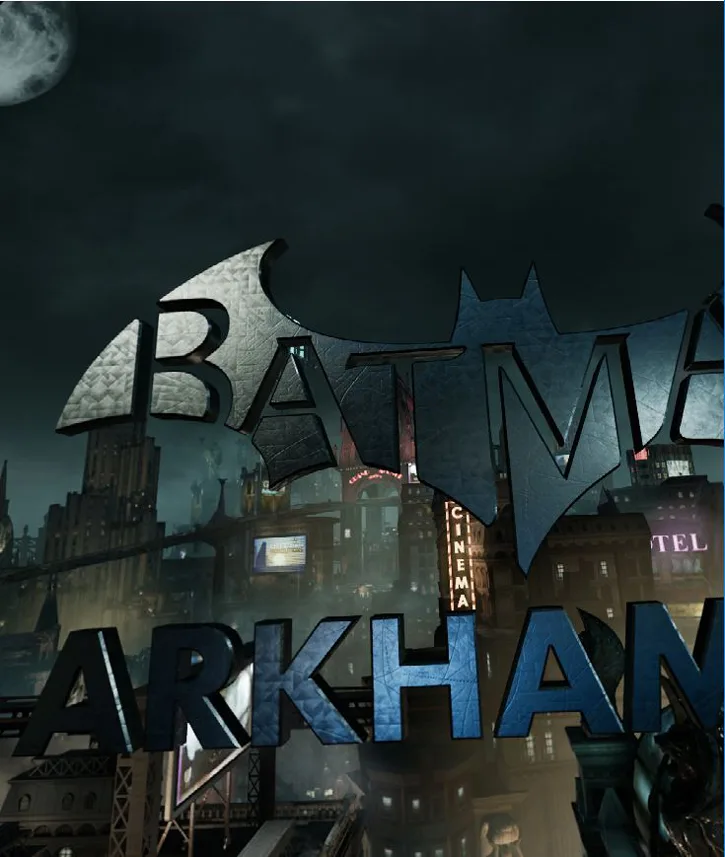
Batman Arkham VR has very few adjustable settings so we benchmark at its full resolution and with 100% pixel density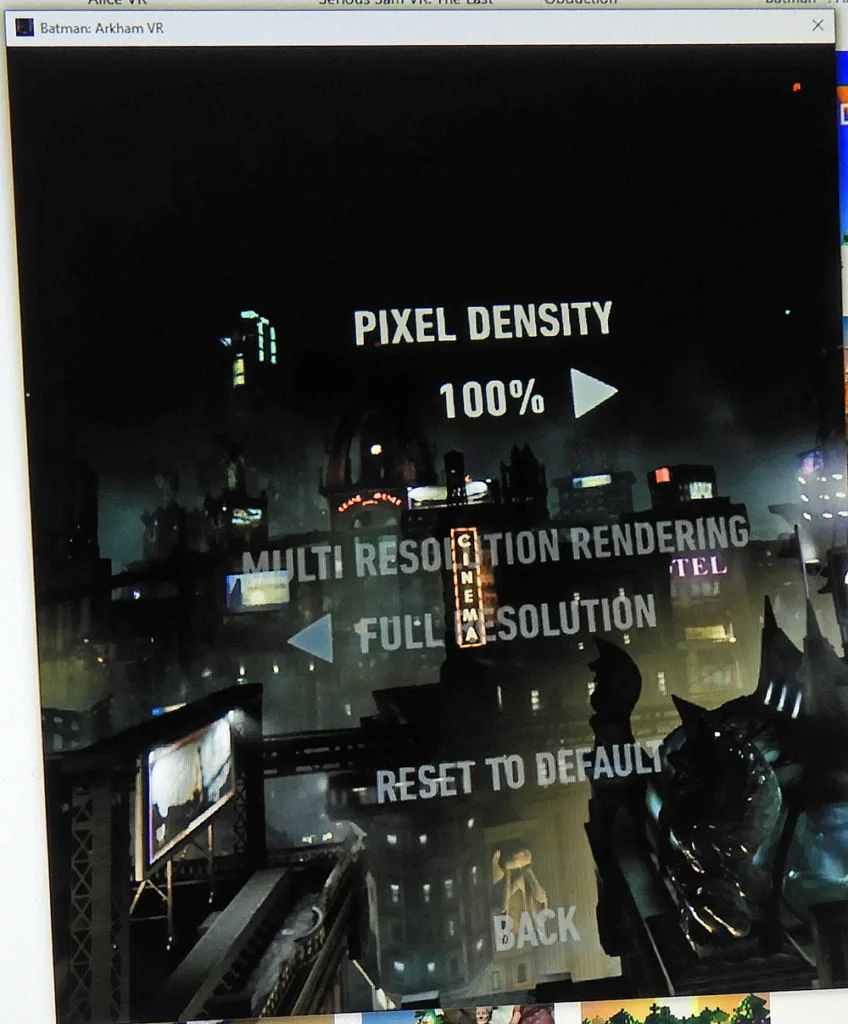
Here are the performance results of our competing cards compared using FCAT-VR’s generated chart.
The unconstrained framerate of the RTX 2060 SUPER was 175.1 FPS with no dropped frames, the RX 5700 XT delivered 194.8 FPS with 6 dropped frames, and the RTX 2070 SUPER gave 186.0 FPS with no dropped frames. None of our cards require the production of synthetic frames.
Chronos
Chronos is an Oculus Rift exclusive launch title built on the Unreal engine with graphics options that are good for video card performance testing. It is a 3rd-person view RPG which includes many puzzles and it also requires the player to be good in combat. 
We picked the highest Epic settings for each option.

Here is the FCAT-VR generated chart for Chronos.  The RTX 2060 SUPER achieved 91.3 FPS with 5 dropped frames, the RX 5700 XT got unconstrained 103.5 FPS with 16 dropped frames and the RTX 2070 SUPER lead with 113.8 FPS with 2 dropped frames. None of our three cards resorts to using synthetic frames.
The RTX 2060 SUPER achieved 91.3 FPS with 5 dropped frames, the RX 5700 XT got unconstrained 103.5 FPS with 16 dropped frames and the RTX 2070 SUPER lead with 113.8 FPS with 2 dropped frames. None of our three cards resorts to using synthetic frames.
Let’s check out DiRT: Rally next.
DiRT: Rally
DiRT: Rally is built on the Ego Engine. It features a built-in benchmark that is very repeatable. 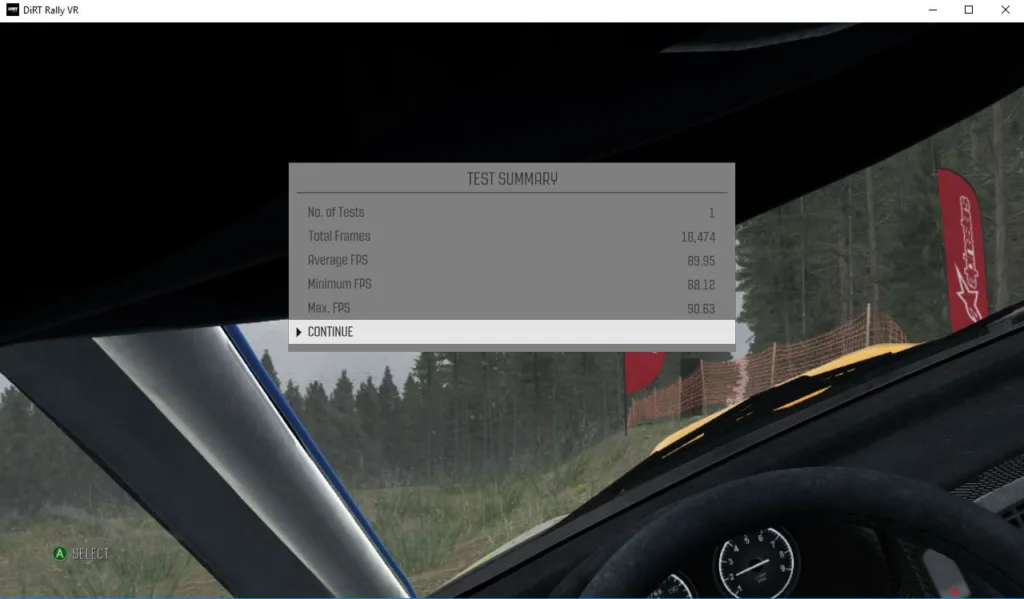 DiRT: Rally is a fun and rather demanding VR game that requires its players to learn its challenging road conditions. DiRT: Rally has multiple individual settings although we benchmarked using the stock “Ultra” preset.
DiRT: Rally is a fun and rather demanding VR game that requires its players to learn its challenging road conditions. DiRT: Rally has multiple individual settings although we benchmarked using the stock “Ultra” preset.
Here are the DiRT: Rally frametime and interval plots as charted by FCAT-VR.
The RTX 2060 SUPER managed 103.2 unconstrained frames per second with 15 dropped frames, the RX 5700 XT gave 110.4 FPS with 16 dropped frames, and the RTX 2070 SUPER delivered 113.4 FPS with 19 dropped frames. None of the frames are synthetic.
Elite Dangerous
Elite Dangerous is a popular space sim built using the COBRA engine. It is hard to find a quality repeatable benchmark outside of the training missions.

A player will probably spend a lot of time piloting his space cruiser while completing a multitude of tasks. Elite Dangerous is also co-op and multiplayer with a dedicated following of players.
We picked the default Ultra setting. Here are the frametimes.
The RTX 2060 SUPER delivered 76.6 unconstrained frames per second with 2 dropped frames and no synthetic frames, the RX 5700 XT managed 76.9 FPS with no dropped frames and 1% synthetic, and the RTX 2070 SUPER gave 89.6 FPS with 2 dropped frames with none synthetic. Interestingly no frames were synthetically generated by the RTX 2060 SUPER even though it cannot quite manage 90 FPS.
Let’s check out another demanding VR game, Fallout 4.
Fallout 4 VR
Fallout 4 uses the Creation Engine. It has been somewhat optimized for the Oculus Rift and the controls work with it although we greatly prefer using the Vive. We benchmark at its highest settings and with TAA.
Here are the frametimes and interval plots for Fallout 4.
In Fallout 4, the RTX 2060 achieved 81.7 FPS with 21 dropped frames and no synthetic frames while the RX 5700 XT delivered 83.7 unconstrained FPS with 81 dropped frames and also generated 20% synthetic frames. The RTX 2070 SUPER gave 96.4 FPS with 16 dropped frames with no synthetic frames.
Next we benchmark Hellblade: Senua’s Sacrifice.
Hellblade: Senua’s Sacrifice
Hellblade: Senua’s Sacrifice is a visually impressive game using the Unreal 4 engine. It is a dark and disturbing game that is far more intense in VR than playing the regular version. We benchmark at the Very Highest settings and with TAA.
Here is the frametime plot for Hellblade: Senua’s Sacrifice.
In Hellblade: Senua’s Sacrifice, the RTX 2060 SUPER delivered 81.8 FPS with 145 dropped frames and 10% of the frames are synthetic. The RX 5700 XT achieved 125.2 unconstrained FPS with 16 dropped frames and no synthetic frames. The RTX 2070 SUPER gave 121.1 FPS with 38 dropped frames and no synthetics.
Next we will check out another very demanding VR game, Obduction.
Obduction
Obduction is considered the spiritual successor to Myst and Riven. It is an adventure game developed by Cyan Worlds using the Unreal 4 engine. There is an emphasis on puzzle solving which get more and more difficult as the player progresses.
The RTX 2060 SUPER managed 64.4 FPS with 1 dropped frames but with 50% synthetic frames generated. We suspect there is a driver issue as last week the RTX 2060 delivered a higher FPS. The RX 5700 XT achieved 67.8 FPS with no dropped frames and 38% of the frames are synthesized. The RTX 2070 SUPER delivered 81.3 FPS with 12 dropped frames but none of the frames were synthesized.
Next we will check out another demanding VR game, Project CARS 2.
Project CARS 2
There is no way to convey the incredible sense of immersion that comes from playing Project CARS 2 in VR using a wheel and pedals. It uses its in-house Madness engine and the physics implementation is outstanding.
Project CARS 2 offers many performance options and settings, and we prefer playing with SMAA Ultra.
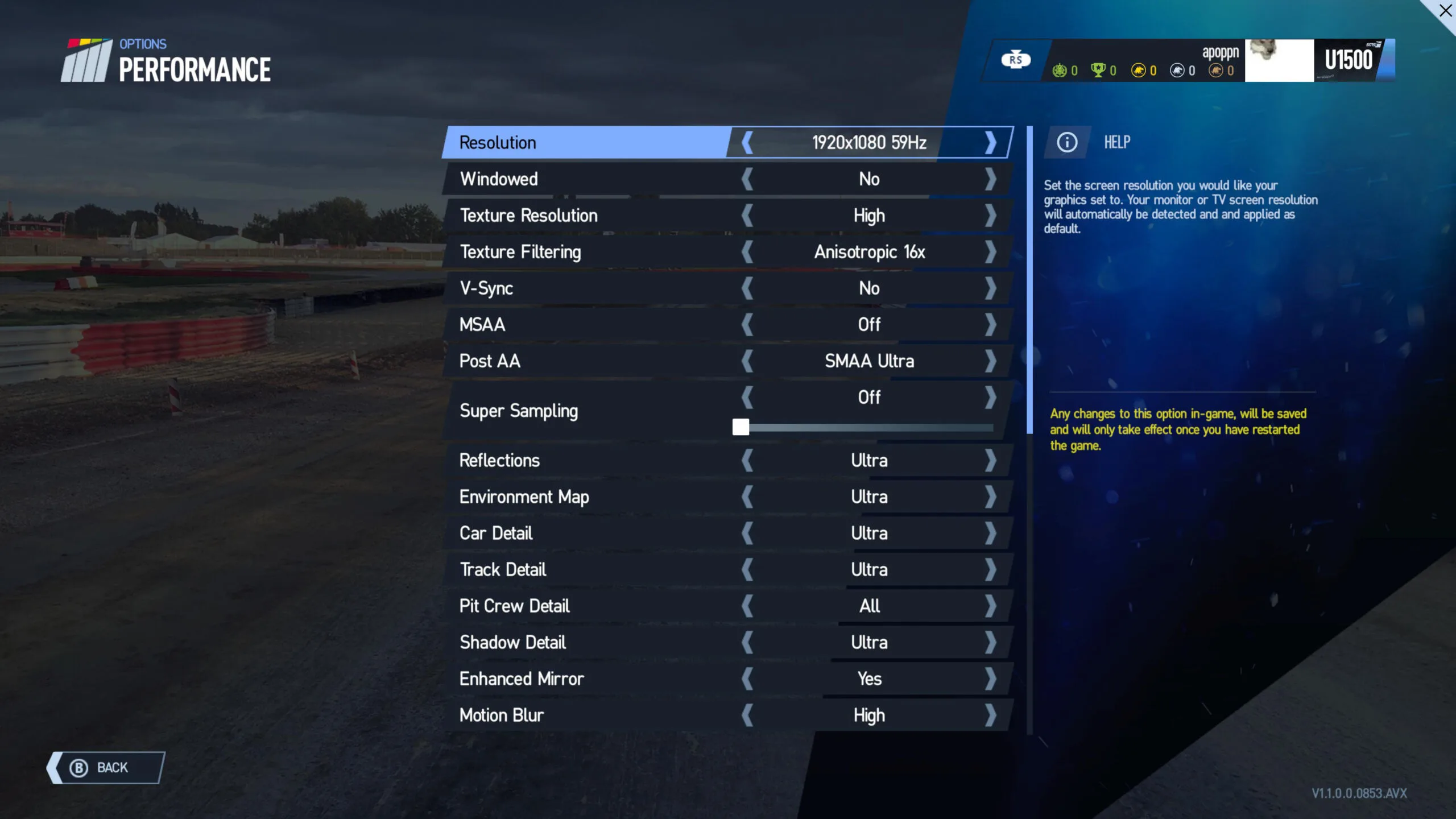
We used maximum settings except for Motion Blur which look best to us on Low. We would recommend lowering grass and reflections to maximize framerate delivery if necessary.
Here are the results of our FCAT-VR benching.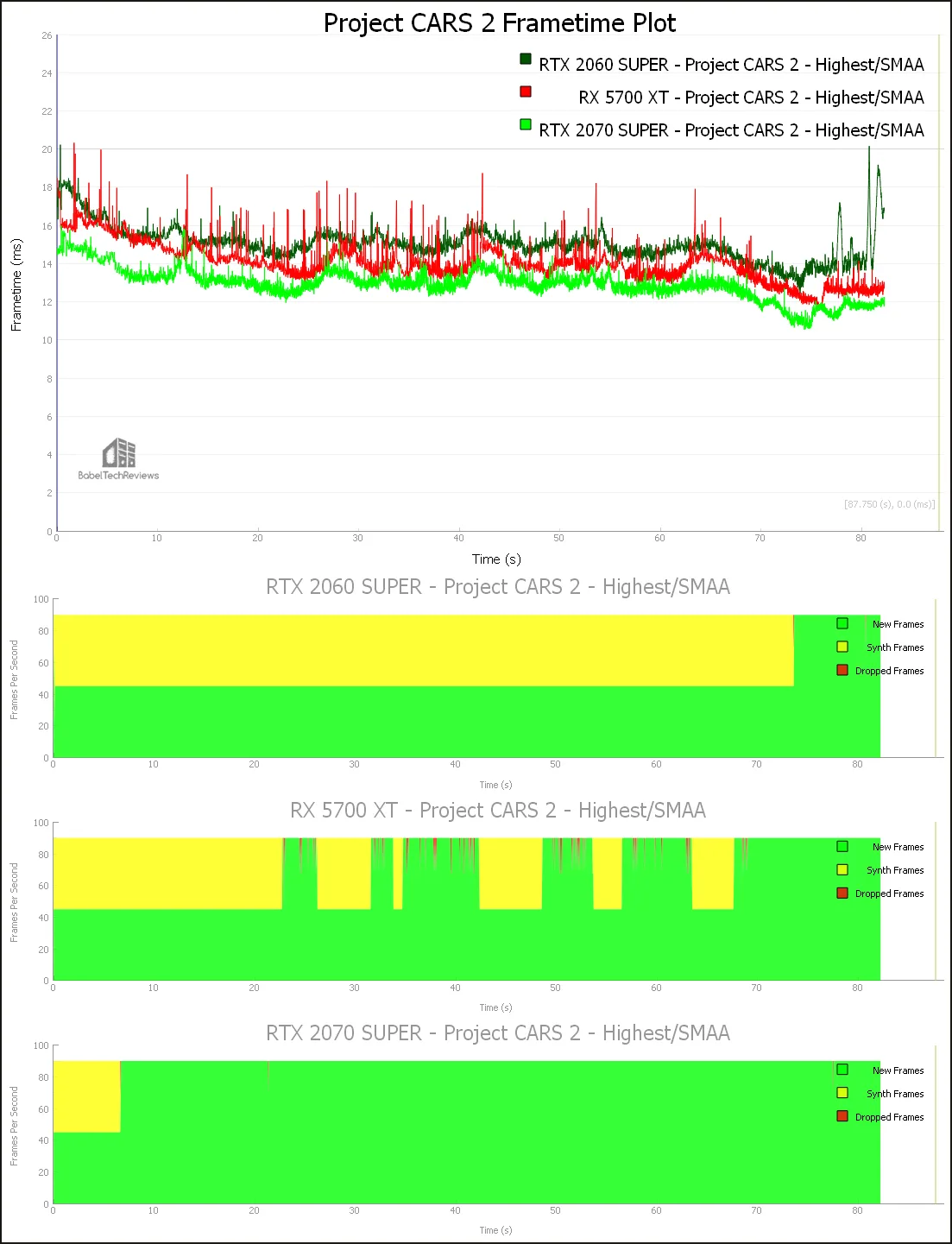
The RTX 2060 SUPER managed 66.6 unconstrained FPS, 2 dropped frames with 45% synthetic frames generated, while the RX 5700 XT delivered 72.2 FPS with 62 dropped frames and 26% of its frames are synthesized. The RTX 2070 SUPER achieved 77.7 FPS with 3 dropped frames but only 4% of the frames were synthesized.
Let’s benchmark Robinson: The Journey.
Robinson: The Journey
Robinson: The Journey is first person adventure/puzzle game developed by Crytek using the Cryengine. Just like with Crytek’s PC games, the VR visuals are outstanding.
Crytek’s Robinson: The Journey is a short but really fun game with a start to finish in about 6 hours. It’s probably Crytek’s best story and you even get a pet baby T-Rex as one of your two companions.
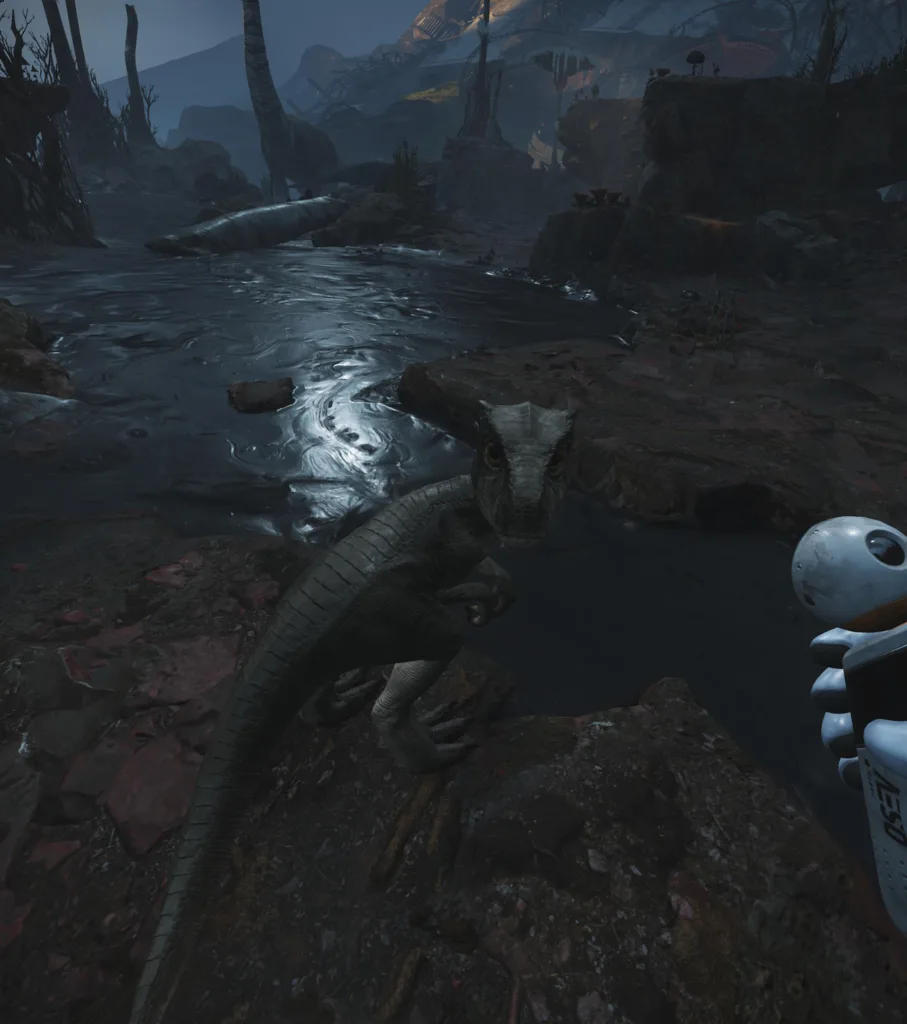
We benchmarked at the highest settings and used 1.0X as the resolution setting.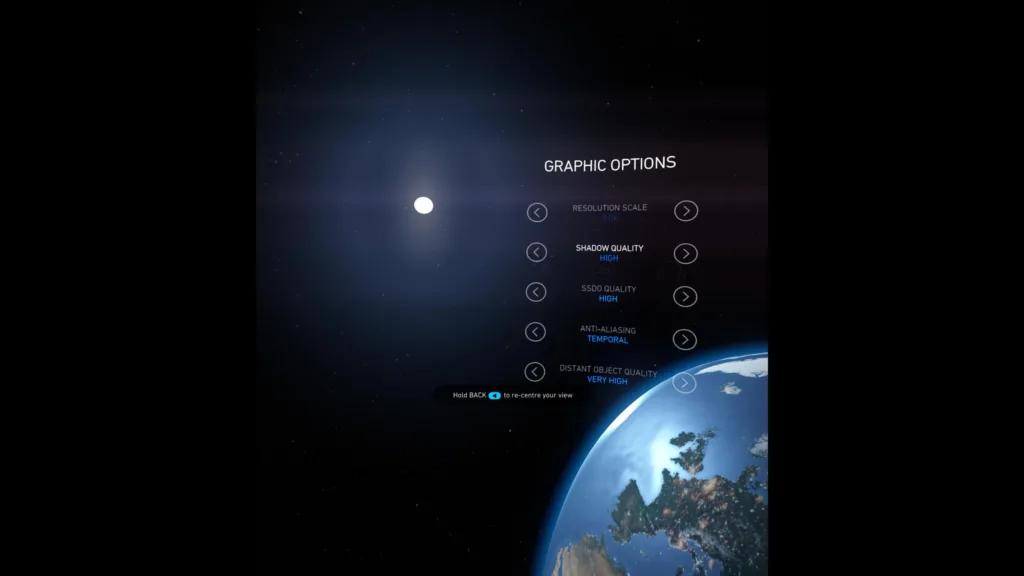
Here are the frametime plots of our competing video cards:
The RTX 2060 SUPER managed 159.8 FPS with 1 dropped frame. The RX 5700 XT achieved 165.13 FPS with 1 dropped frame while the RTX 2070 SUPER delivered 173.2 FPS with 5 dropped frames. No synthetic frames were needed to be generated by our cards.
Let’s benchmark Skyrim VR.
Skyrim VR
Skyrim VR is an older game that is not as demanding as many of the newer VR ports so its performance is still very good on maxed-out settings using its Creation engine. We played for over 40 hours to complete the main quest in VR with a much higher sense of immersion than with the pancake game.
We benchmarked Skyrim VR using its highest settings, but we left the resolution at 100%.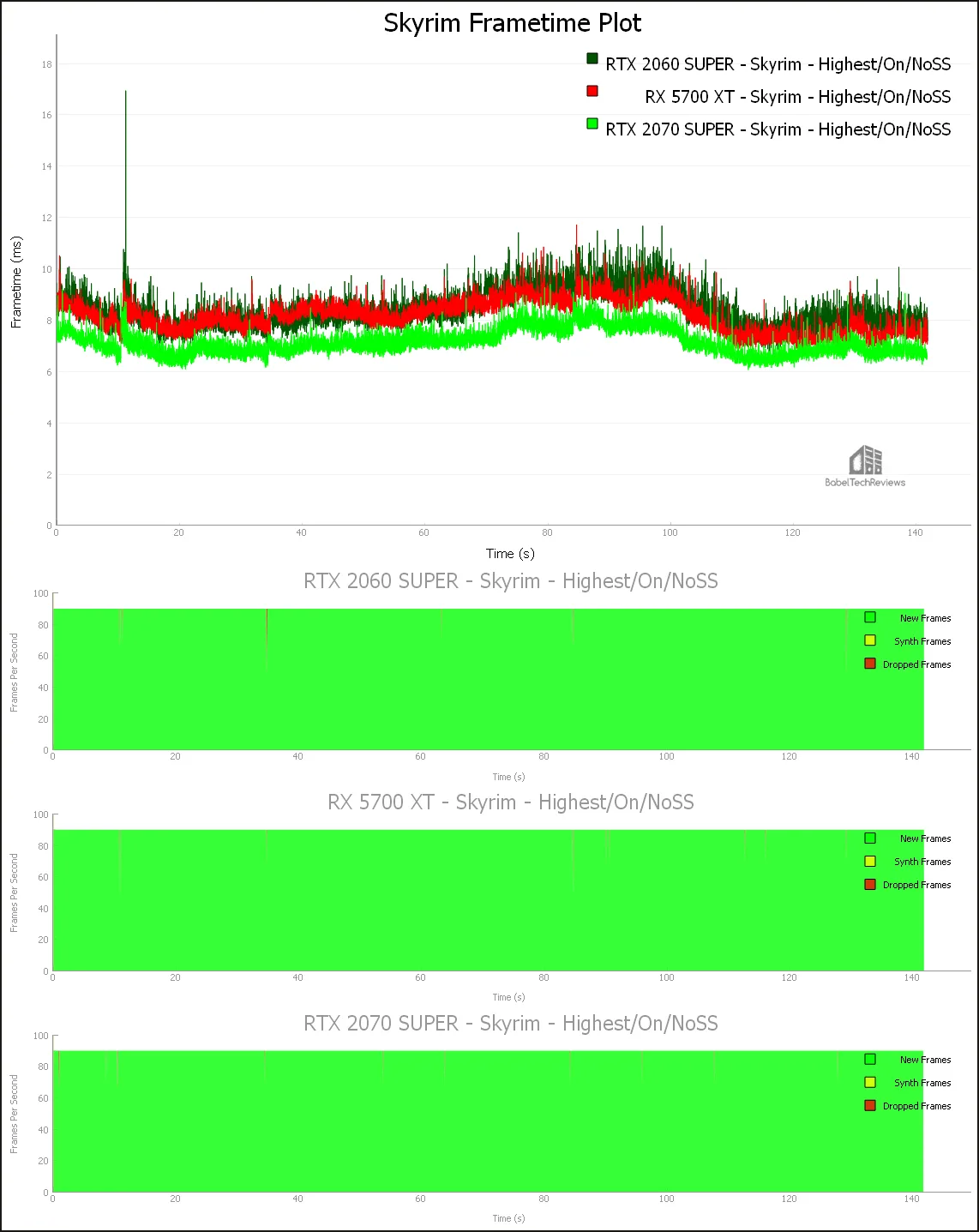
The RTX 2060 SUPER delivered 119.1 unconstrained frames per second with 13 dropped frames, while the RX 5700 XT managed 122.6 FPS with 12 dropped frames. The RTX 2070 SUPER gave 140.3 FPS with 12 dropped frames. No synthetic frames were needed to be generated by either card.
Subnautica
Subnautica is still in early access on the Oculus Store and it uses the Unity engine. As the sole survivor of a crash landing, the player ventures into the depths of a visually impressive alien underwater world. Here you can explore, craft equipment and build bases, pilot underwater craft, and solve mysteries all while attempting to survive a hostile environment.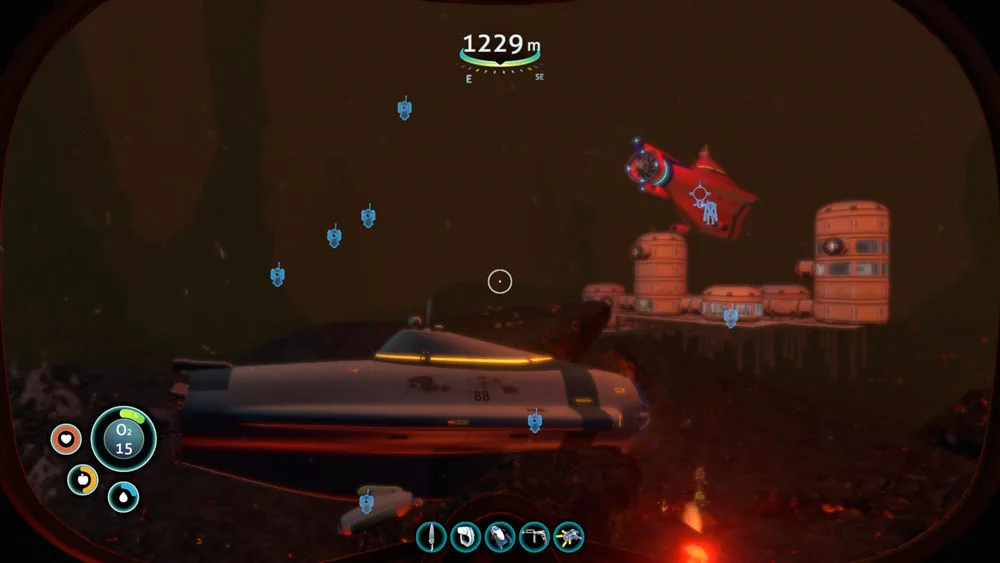
We benchmarked Subnautica using its highest settings, but we left the resolution at 100%.
The RTX 2060 SUPER managed to give 51.6 unconstrained frames per second with 21 dropped frames and 51% of its frames were synthetic. The RX 5700 XT delivered 57.1 FPS with 60 dropped frames and 51% of its frames were also synthetic. The RTX 2070 SUPER achieved 57.0 FPS with 23 dropped frames and 50% of its frames were synthesized.
The Vanishing of Ethan Carter
The Vanishing of Ethan Carter is built on the Unreal 4 engine and it boasts amazing visuals. Although it is considered by some to be a “walking simulator”, it is also an excellent detective game with great puzzles. Beware as its style of locomotion tends to make many players VR sick.
There are just a few in-game graphics options available, so we picked 100% resolution with TAA.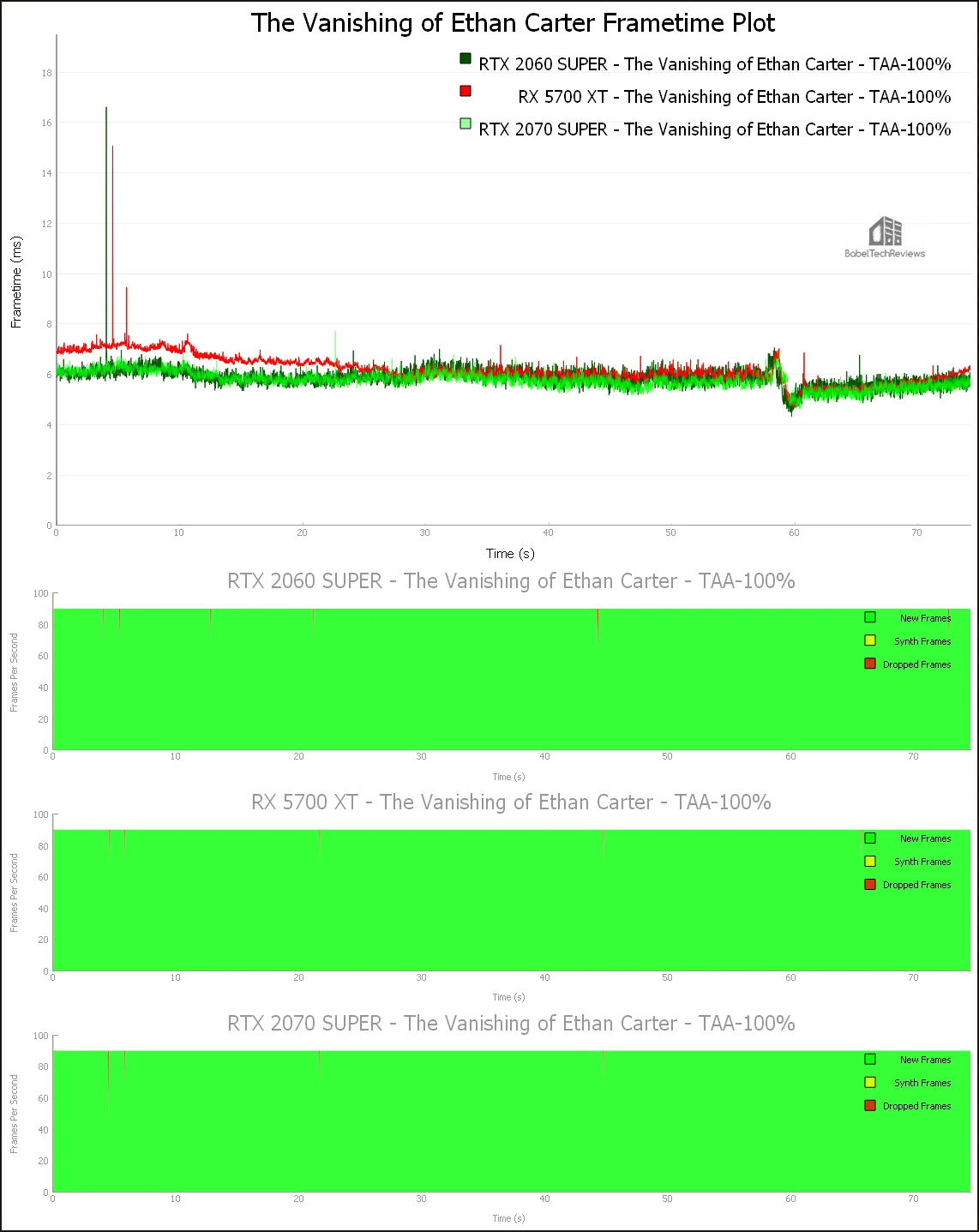
The RTX 2060 SUPER delivered 171.7 FPS with 9 dropped frames. The RX 5700 XT managed 156.6 FPS with 7 dropped frames. The RTX 2070 SUPER gave 173.7 FPS with 8 dropped frames. No synthetic frames were needed to be generated.
If there is performance headroom, we recommend increasing the resolution multiplier as far as a player’s card can handle without needing to generate synthetic frames. The Vanishing of Ethan Carter is the last of our twelve tested games, so let’s look at the summary charts.
Unconstrained FPS, dropped frames, and synthetic frames
In this chart, we summarize the overall Unconstrained Framerates of our test games. The two synthetic benchmarks we use, Superposition and VRMark’s Cyan Room. We also compare the RX 5700, the RTX 2060, the RX Vega 64, the GTX 1080, and the RTX 2070 on recent drivers. The Unconstrained Framerates are given in bold text, followed by the dropped frames (d), and the percentage of synthetic frames (s) in italics.
Open this chart in a separate window or tab for best viewing.
Let’s check out our conclusion.
Conclusion
The RTX 2060 SUPER, the RX 5700 XT and the RTX 2070 SUPER are in approximately the same class when it comes to VR performance. The RX 5700 XT delivers higher unconstrained frames in 11 out of 12 games compared to the RTX 2060 SUPER but it only wins 2 games and ties one versus the RTX 2070 SUPER which is the fastest of the three cards we tested.
The RX Vega 64 liquid-cooled edition is in the same class as the GTX 1080 and the RTX 2070 but it falls behind even the RX 5700 in VR performance. We can probably conclude that Navi is significantly better suited for VR than Vega.
We will continue our VR benchmarking as we transition from benchmarking with the Oculus Rift to benchmarking with the Vive Pro. The Pro is more demanding of video cards with better visuals and with a higher resolution than the Rift.
Our upcoming review later this week will attempt to compare the performance of the same 5 games using the Oculus Rift CV-1 compared to the Vive Pro as we continue our “VR Wars” series. We are surprised by what we are learning. Stay tuned!
Happy VR gaming!




